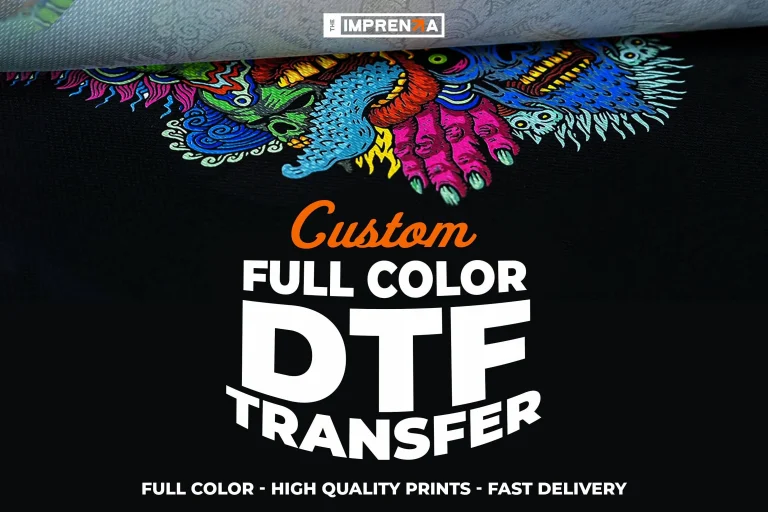DTF transfers, short for Direct-to-Film transfers, are revolutionizing the landscape of custom apparel printing by combining advanced digital printing technology with remarkable versatility. This innovative approach allows designers to achieve stunning results on an extensive range of fabrics, ensuring vibrant colors that stand the test of time. As the DTF printing process continues to evolve, its advantages over traditional methods become increasingly apparent, offering cost-effective solutions for small orders while maintaining exceptional detail. Whether you’re a seasoned printer or a newcomer to the world of fabric design, understanding DTF transfers is vital for harnessing the full potential of modern printing capabilities. Dive into this guide to uncover how DTF can transform your printing projects and elevate your creative outputs.
When we talk about the art of garment printing, techniques such as also known as transfer prints or film prints play a crucial role in how designs are applied to textiles. Utilizing the state-of-the-art printing technology, these methods allow for delicate details and rich colors to come alive on various materials. Adapting to the unique requirements of custom fabric creations, these approaches offer flexibility and creativity to both hobbyists and businesses alike. This descriptive overview will explore the key features and benefits of these innovative print solutions, shining a light on how they are reshaping the custom apparel industry.
Understanding the DTF Printing Process
The DTF printing process is a multi-step method that has gained popularity thanks to its simplicity and effectiveness. It begins with the creation of a digital design that can be tailored to fit the specific needs of any project. This design is then printed onto specialized DTF transfer film using dedicated DTF printers, which are critical for achieving high-quality results. The versatility of this process allows creators to use a range of colors and intricate patterns that come to life on fabric.
Following the design and printing stages, the DTF process requires the application of adhesive powder onto the wet ink. This adhesive is crucial as it ensures that the design will bond securely to the fabric during the heat pressing step. Heat press equipment then applies the necessary pressure and temperature, securely transferring the design onto a variety of textiles, including cotton and polyester. This seamless integration of design and fabric makes DTF an exciting option for custom apparel and promotional products.
Frequently Asked Questions
What are the advantages of DTF transfers compared to other printing methods?
DTF transfers offer several advantages over traditional printing methods such as screen printing and DTG printing. Key benefits include versatility, as DTF can be used on various fabrics such as cotton and polyester; cost-effectiveness, especially for small orders or custom designs; and the ability to produce vibrant colors and intricate details that enhance the overall print quality.
How does the DTF printing process work?
The DTF printing process involves several steps: first, create your design on a computer; then, use a DTF printer to print the design onto a special transfer film. After printing, sprinkle adhesive powder onto the wet ink and finally heat-press the film onto the fabric. This method ensures a strong bond and high-quality result.
What materials are needed for successful DTF printing?
To execute DTF printing successfully, you need a DTF printer that uses specific inks, high-quality transfer film, eco-friendly water-based inks, and heat press equipment. These materials are crucial for achieving the vibrant and durable prints characteristic of DTF transfers.
What types of fabrics can DTF transfers be applied to?
DTF transfers are highly versatile and can be applied to a wide range of fabrics, including cotton, polyester, and their blends. This adaptability makes DTF printing an optimal choice for custom apparel and various merchandise.
Can DTF printing be viable for small businesses?
Absolutely! DTF printing is particularly attractive for small businesses due to its lower setup costs and flexibility for creating custom designs. The ability to produce high-quality, vibrant prints without a substantial investment allows entrepreneurs to expand their product offerings easily.
What innovations are currently shaping DTF printing technology?
Recent innovations in DTF printing technology include advancements in printer capabilities and ink formulations, leading to faster printing processes and improved ink durability. These updates benefit the quality and longevity of printed items, making DTF an exciting option for custom apparel producers.
| Key Point | Details |
|---|---|
| What are DTF Transfers? | A digital printing method using a specialized film to transfer high-quality designs onto fabric. |
| Materials Required | Essential items include a DTF printer, transfer film, water-based inks, and heat press equipment. |
| Advantages of DTF Transfers | Advantages include versatility across fabric types, cost-effectiveness for small orders, and capability for vibrant details. |
| Applications of DTF Transfers | Popular in custom apparel, promotional items, and merchandise for small businesses. |
| The DTF Printing Process | Involves design creation, printing on film, adhesive application, and heat pressing. |
| Innovations in DTF Technology | Recent advancements have improved printing speed, ink durability, and vibrancy after washes. |
Summary
DTF transfers have revolutionized the world of digital printing with their innovative approach to producing high-quality designs on various fabrics. This remarkable technique provides a versatile and cost-effective solution, making it an attractive option for businesses engaged in custom apparel and promotional items. As the industry evolves, embracing DTF transfers can lead to enhanced offerings and increased customer satisfaction, ensuring that businesses remain competitive in a rapidly changing marketplace.

